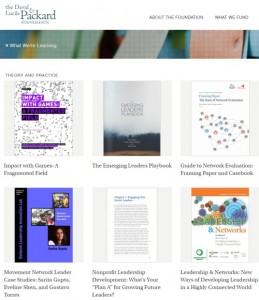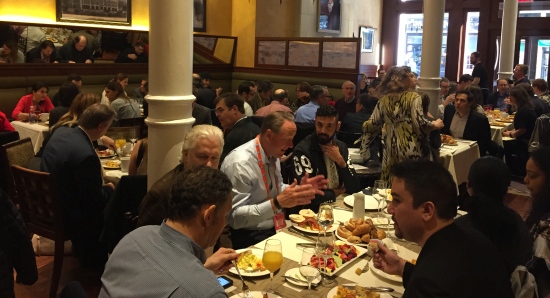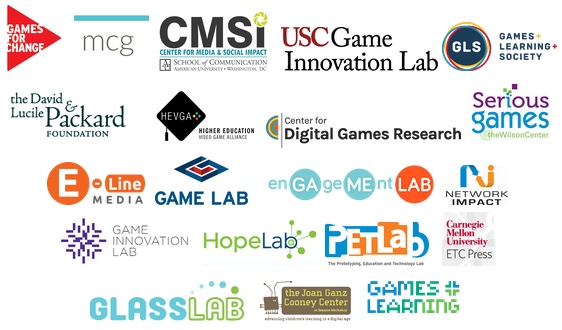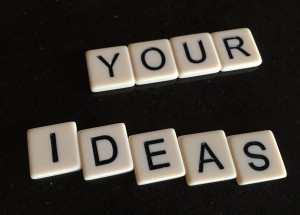What if much of the fragmentation discussed in our first report comes from a few hidden assumptions held by project leaders and funders in our field? Below we identify one such “risky assumption” that may impact several areas, as well as an idea for reframing.
Look for a revised report in the coming weeks. The ideas for these “assumption” posts come in large part from the feedback and ideas we have received in recent months from the community. Thank you all.
Risky Assumption #4: “To Scale Impact, Our Games Must Be MASS MEDIA.”
Who doesn’t want scale? Surprisingly strong emotions often swirl around the topic of scaling. The problem is that assumptions on scaling can obscure alternatives to how change happens in the world.
The most common assumptions are true… sometimes. Consider:
- “We want impact… as mass media” (e.g., we need a massive audience — so without a million downloads, why bother?)
- “We want scale… just like commercial videogames” (e.g., unless we can compete with commercial titles, how can a game have impact?)
- “We want scale… by changing policy” (e.g., unless the game changes a law, who cares if it affected public opinion — because we need structural change, right?)
…none of these is “wrong” per se, and the policy emphasis is strange enough to many artists, but all three can obscure other possibilities.
Consider these alternative scaling approaches:
- Games can be used in a campaign that seeks to “shift the culture” of a community by triangulating several local interventions (e.g., to establish a “college going culture” in a particular high school, see this FutureBound study). Such triangulation is hard to achieve nationally, and so is more often pursued in cities, states, or even within a particular school.
- Some game projects embrace local customization as an approach to achieving scale, despite the costs. Theses projects resist the idea that a single international implementation would be effective for local communities. Much like local parks and economic planning, these games approach scale as the “mass localization” of an approach, in opposition to replication.
Both emphasize a level of granularity beyond players and mass media. Instead of starting at the individual level (player) and scaling directly to “mass audience” level, they insist on the importance of establishing a coherent context like local culture.
Even traditional games can benefit from multiple models for scaling. Most simply, one game may actually have impact on multiple levels. For example, a game might set out to shift individual behavior, but discover it has shifted cultural norms as well. Simply to be good observers of our own games, we may need to actively stay open-minded to secondary and unintended impact models.
More proactively, a team with enough capacity and care might begin to combine several kinds of scale deliberately. For example, after launching a mass media game in the Android store, the team might also launch a series of community-based discussion groups. In fact, this may be the best strategy for ambitious goals like policy and social reform, which are never unidirectional but transform when society reaches a tipping point. Ultimately, our best games may be appropriated to target additional goals and secondary campaigns, gathering coherence for reform like a snowball.
Overall, we try to stay agnostic and resist picking one “best” model for scale. Our recommendation is to beware the assumptions that come with singular notions of scale — especially seeking scale via a mass media approach. Better games will come from making decisions about scale, rather than defaulting into an assumption. As a field, we can help each other identify secondary scaling opportunities and listen more deeply when we make room for multiple pathways to societal change.
…positive reframing: “There are multiple ways to reach scale (not just as mass media) for many games, and definitely for the field as a whole.”
Sound useful? Let us know what you think!
—–
Other assumption posts include: #1 (design as separate from research), #2 (delay the ‘research design’), #3 (the logic model is obvious).
(This post was written by Benjamin Stokes, Gerad O’Shea, and Aubrey Hill.)


 I’m Sabrina Culyba, a game designer at
I’m Sabrina Culyba, a game designer at  Highlights from our soft-launch of
Highlights from our soft-launch of  Second, our big panel was at the Games & Media summit, at the intersection of film and games. We featured speakers who are “impact designers” from the world of documentary film, museum games and game design education. The session particularly focused on a tricky balancing act: “Optimizing for Impact AND Creativity.” Here are two pictures:
Second, our big panel was at the Games & Media summit, at the intersection of film and games. We featured speakers who are “impact designers” from the world of documentary film, museum games and game design education. The session particularly focused on a tricky balancing act: “Optimizing for Impact AND Creativity.” Here are two pictures:

 Until mid-May, we are especially eager for ideas on what should be added to our
Until mid-May, we are especially eager for ideas on what should be added to our 